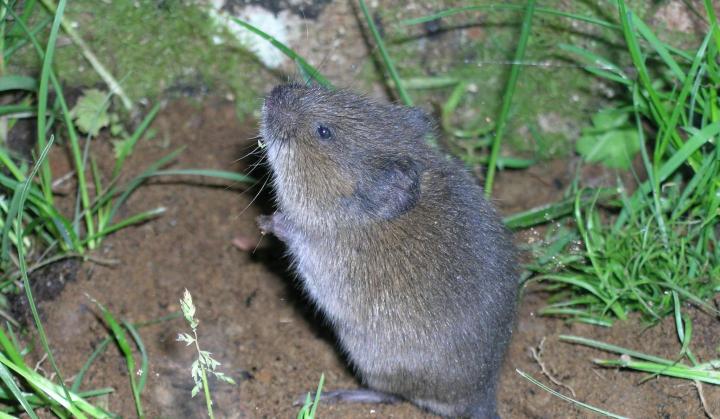Grasping Vole Pest Control: Thorough Insights on Infestation Avoidance and Therapy Strategies
By recognizing the subtle indications of vole infestation early on, we can take positive measures to prevent extensive damages. In this conversation, we will certainly check out the nuances of vole behavior, dive into the identification of problem signs, and uncover the most efficient avoidance and treatment approaches.
Recognizing Vole Behavior
Examining the foraging patterns of voles supplies valuable insights right into their habits and habitat choices. Voles, little rats appearing like computer mice, are herbivores understood for their below ground tunneling tasks. By observing their foraging behavior, scientists can gain a far better understanding of where voles favor to establish their habitats and the level of their environmental influence. Voles are prolific breeders, with a solitary women qualified of generating several litters in a year, making it important to understand their habits for efficient insect control approaches.
Study shows that voles show discerning feeding practices, favoring origins, seeds, and bulbs. This dietary preference affects their foraging patterns, leading them to areas rich in plant life and ground cover. Furthermore, voles are recognized to create fancy passage systems for foraging and nesting functions, showing a high level of flexibility to their surroundings.
Recognizing vole habits is necessary for carrying out targeted pest control procedures that interrupt their habitat preferences and foraging tasks (vole pest control). By examining their behavior, professionals can develop extra effective avoidance and treatment techniques to take care of vole infestations

Identifying Signs of Vole Infestation
Vole invasions can be spotted by identifying certain indicators of their existence in an area. Among one of the most usual indicators of a vole infestation is the presence of surface area paths. Voles produce networks of slim paths on the ground that are usually about 2 inches broad. These paths are commonly found in grassy locations or under compost or ground cover where voles can move freely and browse for food.
Another vital indication of vole infestation is the visibility of small burrow openings in the ground. Voles dig superficial burrow systems with numerous entries and departures. These burrows function as sanctuary and nesting sites for the voles. Additionally, voles are understood to leave behind chewed plant stems, origins, and light bulbs near their burrow openings, indicating their feeding activity in the location.
Additionally, vole droppings can likewise represent their existence. Vole droppings are small, brownish, and cylindrical fit, resembling grains of rice. Locating these droppings along runways or near burrow openings can confirm a vole infestation. By being watchful for these indicators, residential property proprietors can quickly deal with vole invasions and protect against more damages.
Implementing Aggressive Prevention Measures

Moreover, utilizing all-natural vole deterrents like castor oil-based repellents or killer pee can act as efficient precautionary procedures. It is likewise advisable to on a regular basis evaluate outside rooms for any kind of signs of vole task, such as paths or delve openings, to deal with potential invasions promptly. vole control utah. By embracing these proactive avoidance techniques, building owners can significantly decrease the possibility of vole damage and maintain the health and appearances of their landscapes
Effective Treatment Strategies
Integrating targeted trapping techniques and using accepted rodenticides are necessary parts of reliable therapy techniques for handling vole infestations. Normal tracking and upkeep are also essential aspects of effective therapy approaches to make certain that vole populaces are kept under control. By integrating capturing, rodenticides, habitat adjustment, and constant monitoring, reliable vole bug control can be achieved.
Tracking and Upkeep Tips
Normal tracking enables for the early detection of vole activity, allowing punctual treatment before invasions get worse. vole pest control To effectively keep track of vole populaces, strategically positioned traps can be made use of in vole paths or near burrow entrances.
In addition, keeping a tidy and well-kept landscape is important in vole prevention. Cleaning away debris, such as piles of wood or thick vegetation, removes prospective vole environments. Routinely cutting and cutting lawns plant life aids minimize vole concealing spots and lessens their accessibility to food sources.
In addition, recurring upkeep of physical barriers, such as fencings or cord mesh, is essential to stop vole invasion. Inspecting and repairing any problems to these structures ensures that vole control stays efficient in safeguarding properties from problems. By integrating these monitoring and upkeep methods right into a thorough vole insect control strategy, individuals can properly manage vole populations and safeguard their homes from damage.
Verdict
To conclude, understanding vole insect control calls for a solid understanding of vole behavior, the capacity to identify indicators of problem, executing aggressive avoidance measures, effective treatment strategies, and constant tracking and maintenance. By taking a comprehensive approach to vole control, people can successfully handle and protect against problems, eventually safeguarding their building and surrounding atmosphere from damage brought on by these tiny rodents.
In this conversation, we will explore the subtleties of vole habits, delve right into the identification of problem indicators, and discover the most efficient prevention and therapy approaches.Including targeted trapping approaches and using approved rodenticides are necessary parts of efficient treatment approaches for managing vole infestations. To properly keep an eye on vole populaces, purposefully positioned catches can be used in vole paths or near burrow entryways. Examining and fixing any kind of problems to these frameworks ensures that vole control continues to be effective in securing residential properties from infestations. By integrating these monitoring and maintenance methods right into a thorough vole bug control plan, individuals can successfully handle vole populations and safeguard their properties from damages.